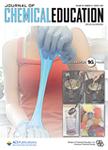版权所有:内蒙古大学图书馆 技术提供:维普资讯• 智图
内蒙古自治区呼和浩特市赛罕区大学西街235号 邮编: 010021

作者机构:Univ Estadual Campinas Inst Chem Dept Analyt Chem IQ UNICAMP BR-1308397 Campinas Brazil Univ Porto Fac Sci Dept Chem & Biochem CIQUPIMS P-4169007 Porto Portugal
出 版 物:《JOURNAL OF CHEMICAL EDUCATION》 (化学教育杂志)
年 卷 期:2024年第101卷第9期
页 面:3767-3779页
核心收录:
学科分类:0401[教育学-教育学] 07[理学] 0703[理学-化学]
基 金:Coordination for the Improvement of Higher Education Personnel - CAPES [00x0ma614]
主 题:Artificial Intelligence General Public First-YearUndergraduate/General Alternative Conceptions/DiscrepantEvents Internet/Web-Based Learning
摘 要:Generative Artificial Intelligence technologies can potentially transform education, benefiting teachers and students. This study evaluated various GAIs, including ChatGPT 3.5, ChatGPT 4.0, Google Bard, Bing Chat, Adobe Firefly, ***, and DALL-E, focusing on textual and imagery content. Utilizing initial, intermediate, and advanced prompts, we aim to simulate GAI responses tailored to users with varying levels of knowledge. We aim to investigate the possibilities of integrating content from Chemistry Teaching. The systems presented responses appropriate to the scientific consensus for textual generation, but they revealed alternative chemical content conceptions. In terms of the interpretation of chemical system representations, only ChatGPT 4.0 accurately identified the content in all of the images. In terms of image production, even with more advanced prompts and subprompts, Generative Artificial Intelligence still presents difficulties in content production. The use of prompts involving the Python language promoted an improvement in the images produced. In general, we can consider content production as support for chemistry teaching, but only with more advanced prompts do the answers tend to present fewer errors. The importance of previously understanding chemistry concepts and systems functioning is noted.